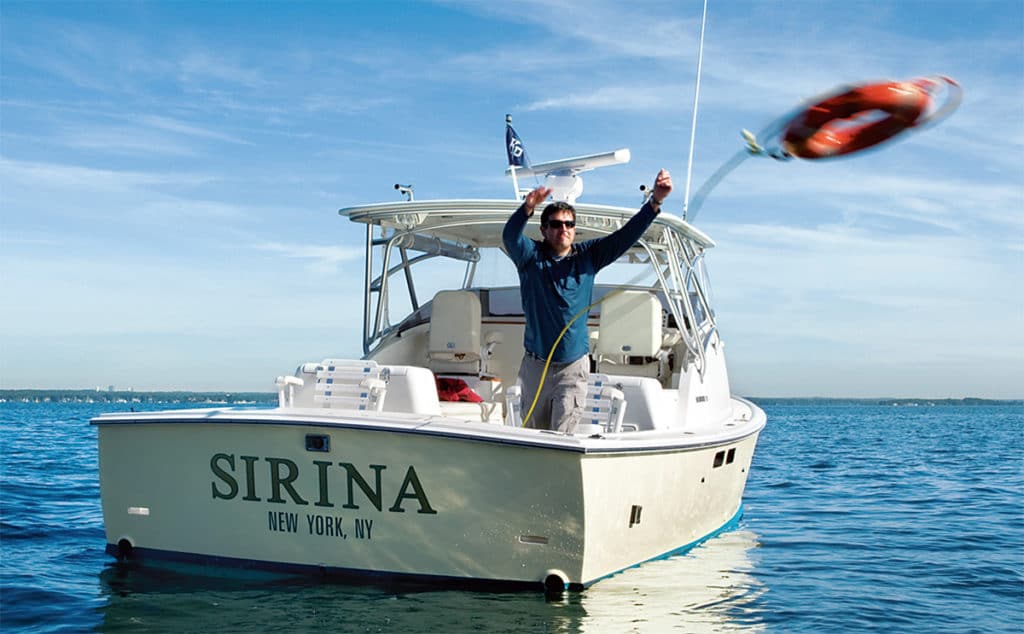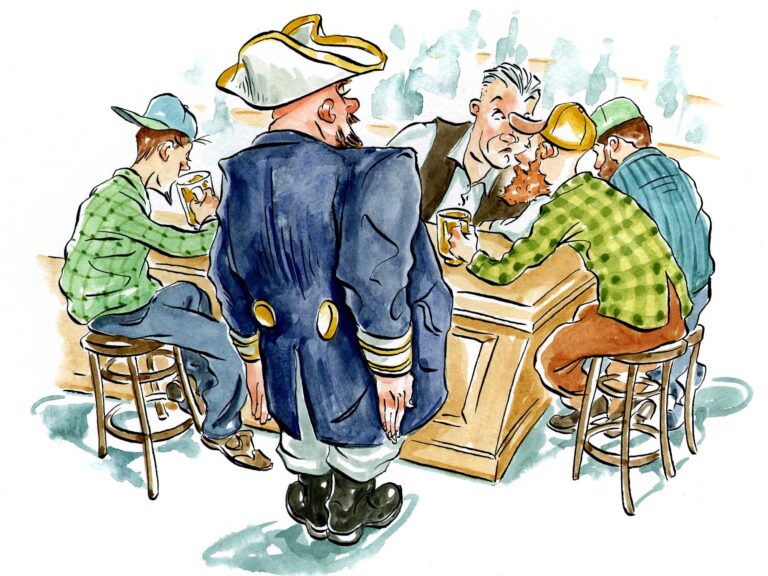
According to the United States Swim School Association, 3,533 people drown on average in the United States every year. In response, the USSSA created guidelines to help its students — and their parents — handle a drowning situation. While its guidelines focus primarily on kids and swimming pools, I find them to be extremely helpful for boaters too. After all, the United States Coast Guard reported in its 2015 statistics that in 76 percent of all fatal boating accidents, the victims drowned. So here, using tips from both the USSSA and our own boating resources, is a guide to helping someone who is drowning.
One, Two, Eyes on You
When someone falls in the water, the first person on your boat who sees the victim needs to keep his eyes on the man overboard and point at him. That way, someone always has a view of the victim’s location if he is drifting in a current or struggling in rough seas.
Call for Help
Even if you think you have the situation under control, alert the authorities over the VHF radio. You may not be able to rescue the person on your own, and even if you do, he or she may need immediate medical attention that you can’t provide.
Circle the Boat
Don’t point the boat straight at the victim because your momentum might carry you over him, even after you cut the throttles. Circle around to the person, positioning the boat on the downwind side so that the wind does not push the boat on top of him.
Throw, Don’t Go
If the person in the water is conscious, try to reach him with your throwable PFD — a Coast Guard requirement to have on board. Be sure to cleat off the tag end of the line attached to it so you can haul in the victim after he grabs it. Also, consider having a weighted ball or monkey’s fist on board. Both are easier to throw longer distances and less susceptible to wind.
Wear A Life Jacket
If the drowning victim is unable to grab the throwable PFD or is struggling to stay afloat, you may have no choice but to send a crew member in with him. The swimmer should be tethered to the boat, if possible, and be wearing a life jacket before going overboard. Otherwise, you may wind up dealing with two people struggling in the water.
Attack From the Back
It’s always best to approach a drowning victim from behind, if possible. If he sees you and is panicking, he may try to grab your head or arms and push you underwater in the process. Grabbing from behind allows you to control the situation and keeps him from wrapping his arms around you.
It’s Not Over
Even if you are able to pull a drowning victim back on board the boat and everything seems OK, you should still get the person medical attention as fast as possible. The reason? Secondary drowning. As the USSSA notes: “People who experience a drowning incident can still have water in their lungs for hours afterward and need to be watched closely.” Be alert for breathing issues and seek help from a medical professional.
Help Yourself: Should you find yourself immersed in cold water in the early season, having on a life jacket is critical for staying safe. But a life jacket won’t protect you from hypothermia. One way to conserve heat is to use the HELP technique. The acronym stands for heat escape lessening posture. Pull your knees up to your chest and cross your arms over the front of the life jacket. The less you move, the more heat your body retains and the longer you can survive.









